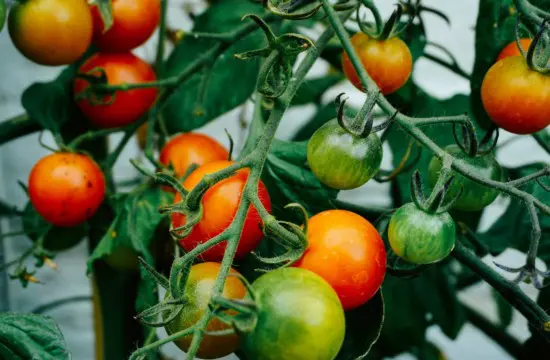The definition of sustainable farming has to do with a lot more than just crops. It is the act of sustainable agriculture. It utilizes ecological cycles in a way that is sensitive to the environment and the plant life within it. Sustainable farming practices promote environmentally friendly methods that protect the land and support the ecosystem – not to mention a lifestyle and a path to feeding the world.
Farmers who commit to sustainable farming practices focus on doing what is best for the natural systems within the environment. They do this by building a healthy soil system, managing water efficiently, minimizing the amount of air and water pollution they produce, and being conscious of their carbon footprint.
By finding innovative ways to efficiently use non-renewable resources and recycle their products, those who engage in sustainable farming methods produce plants, food, and animal products, beneficial for public health. In addition to producing healthy products, farms are also able to maintain profit margins and support their local economies.
Why is Sustainable Farming so Important?
Sustainable farming actively supports and protects the environment while providing resources. When farmers are committed to protecting the natural systems and resources that they rely on, they can produce healthy products that have a minimal environmental impact.
Furthermore, the switch to sustainable farming methods and sustainable agriculture remains profitable. In fact, sustainable practices allow farms to maintain profitability and support their local economies. Some of the practices that farmers rely on include:
- Building a healthy soil system.
- Taking steps to prevent erosion.
- Profitability.
- Integrating a water management system.
- Remaining conscious of carbon emission.
- Increasing resilience to disease, insects, and extreme weather.
- Embracing biodiversity and rotating crops.
Benefits of Sustainable Farming
Farms must be successful and profitable if they are to continue to thrive, so a sustainable farm means a productive farm, which is a benefit to the farmer and his/her family.
In addition, the benefits of sustainable farming also translate to healthier products and safe foods. Sustainable agriculture field practices, in conjunction with accepted industry and land grant ag universities’ best practices, can work together to reduce pesticide use and concerns with misapplications which can be harmful.
Benefits of sustainable farming practices include:
- Reducing the agricultural runoff that becomes absorbed into the ground.
- Avoiding water pollution of lakes, ponds, rivers, and other water sources.
- More efficient use of water.
- Promoting soil fertility by recycling nutrients.
- Utilizing geologic and biologic carbon sequestration to reduce carbon emissions.
- Saving energy by using efficient farm operations.
- Better monitoring and decreased emissions of air pollutants and greenhouse gasses.
- Enhancing the natural habitats for pollinators and beneficial insects.
- Promoting the coexistence of natural wildlife while also protecting the welfare of livestock.
Maximize Your Inputs with AVAIL® T5
Find products to maximize your nutrient use efficiency. From getting the most from your phosphorus to enriching your plants with micronutrients, we have naturally derived solutions to boost your crop yield. Find the perfect solution for you!
Sustainable Farming Methods and Practices
There are many different types of sustainable farming practices that range from increasing biodiversity to using quality fertilizer enhancers. Below are some of the top ways in which people can practice sustainable farming.
Treat Farms as a Living Entity with Biodynamic Farming
Biodynamic farming refers to the way in which farmers can recycle their products and create their own sustainable ‘organisms’. By using recycling and finding ways to reduce their waste, farmers can support sustainable practices. One common way in which farmers can promote biodynamics is by using animal waste to replenish their soil and promote plant growth, which is an area in which many livestock farmers have been ahead of the curve for decades.
Grow Plants With Hydroponics and Aquaponics
In some areas, farmers can use the innovative technique of growing plants without the use of soil. Hydroponics and aquaponics systems use alternative sources to grow plants. While hydroponic systems grow plants directly into mineral solutions, aquaponics is a practice of raising aquatic animals to grow crops indirectly into water.
Instead of relying on traditional fertilizers and soils, plants are nourished through nutrients added directly to the water, creating a more sustainable farming approach. In some cases, farmers incorporate live fish into the system, using their natural waste as a nutrient source for the plants. This eco-friendly method can be scaled for both small operations and large commercial farms, reducing environmental impact and promoting resource efficiency.
Enhancing Sustainable Farming with Fertilizer Enhancers
One of the most effective ways to support sustainable farming practices is by using fertilizer enhancers. These enhancers not only improve plant performance but also promote soil health and protect water quality by minimizing nutrient runoff. They balance nutrient uptake, enhance plant metabolism, increase nutrient availability, supplement growth with phosphates, and reduce the risk of yield loss, all while fostering environmentally responsible farming.
Urban Agriculture and Its Role in Sustainable Farming
As the global population continues to grow, the demand for sustainable food production methods becomes increasingly urgent. Urban agriculture presents a promising solution, allowing city dwellers to contribute to food security through innovative growing techniques. This includes the development of community gardens, rooftop farms, greenhouses, and backyard farms within urban areas. These initiatives not only promote local food production but also foster community engagement and reduce the environmental footprint of food transportation. However, for the long-term future, large-scale sustainable farming practices will remain essential to meet the vast demand for feed, food, fuel, and fiber. Production agriculture, with its capacity to generate significant yields, will continue to be the backbone of global food systems while integrating sustainable practices to ensure environmental health and resource efficiency.
Enhance Profits with Agroforestry and Food Forests
Trees and shrubs can help create long-lasting and diverse land for farmers. Agroforestry refers to the process of creating a microclimate that can support soil humidity and favorable temperatures that also protects crops from extreme weather.
Not only does agroforestry help with the protection of crops, but food forests can provide an extra source of income for farmers. This sustainable farming practice can be supplemented by planting fruit-bearing trees and nut-bearing trees that create a more diverse ecosystem.
The Role of Crop Diversity in Sustainable Farming
By planting diverse crop species together, sustainable farming practices encourage mutual support among plants, leading to greater resilience. High biodiversity is essential for helping crops withstand extreme weather conditions and for enhancing soil fertility. Additionally, crop rotation plays a key role in maintaining soil health, as it allows different plants to naturally replenish and protect the soil.
Sustainable farming can further benefit from the improved use of fertilizers, pest management, and other inputs by adopting the 4Rs Principles of Nutrient Stewardship, which focus on maximizing efficiency and minimizing environmental impact.
Challenges in Transitioning to Sustainable Farming
Transitioning to sustainable farming has its own set of unique challenges. Despite these challenges, the long-term benefits, like soil health, crop productivity, and improved nutrient use efficiency, outweigh the initial burdens. By implementing practical strategies, your farm can minimize risk and maximize sustainability. Here are a few challenges and solutions to make your transition to sustainable farming easier and your operation better.
Upfront Investment Costs
One of the most common barriers to sustainable farming is the initial financial investment. Making the switch can include having to adopt precision ag technology, integrating cover crops, or switching to more biologically-based inputs. These changes will take time to pay off before you begin to see a return on your investment. For commercial operations managing tight margins, those costs can be hard to justify in the short term.
The solution? Focus on strategies that offer dual benefits, like products that improve both sustainability and nutrient efficiency. Using inputs that reduce nitrogen loss protects water quality and also delivers a better ROI by keeping nutrients available for the crop.
Knowledge Gaps and Learning Curves
Another challenge that may present itself is adapting traditional methods to a more modern, sustainable model. Practices like interseeding, in-season nutrient adjustments, or rotating specialty crops may require trial and error. For seasoned growers, this can feel like a step into the unknown.
To help with this learning curve, consult other professionals in similar fields. Agronomists, university extension services, co-ops, and trusted input partners like Verdesian can help bridge the gap between research and real-world results. This offers insights grounded in both data and field experience.
Shifting Away from Conventional Approaches
Similarly to closing the knowledge gap of new methods, you will have to take your new knowledge and put it into practice. For many farmers, their expertise has shaped their methods, making change a challenge, especially if the outcome isn’t an immediate solution.
To better trust and incorporate new methods, start small and test one sustainable practice in a single field or crop season. Monitor the results closely and make data-driven decisions from there. Incremental change is often more realistic and more manageable than a complete overhaul. The key is patience and an open mind. These changes can protect the land for future generations, improve profitability, and sustainability in the long term.
How to Make the Switch To Sustainable Farming Practices
Making the switch to utilizing sustainable farming methods does not need to be difficult, but it is not as easy as just flipping a switch either. In fact, it can be a major mind-shift for a proud and profitable, conventional farmer. Constant and intense field monitoring and timing are crucial to being successful. An open, exploring and innovative attitude is also brutally key to success. The good news is there are experts available to assist farmers and growers in their transition to sustainable farming or if they just have questions. To make the switch and start protecting the environment, connect with a specialist at Verdesian today.


